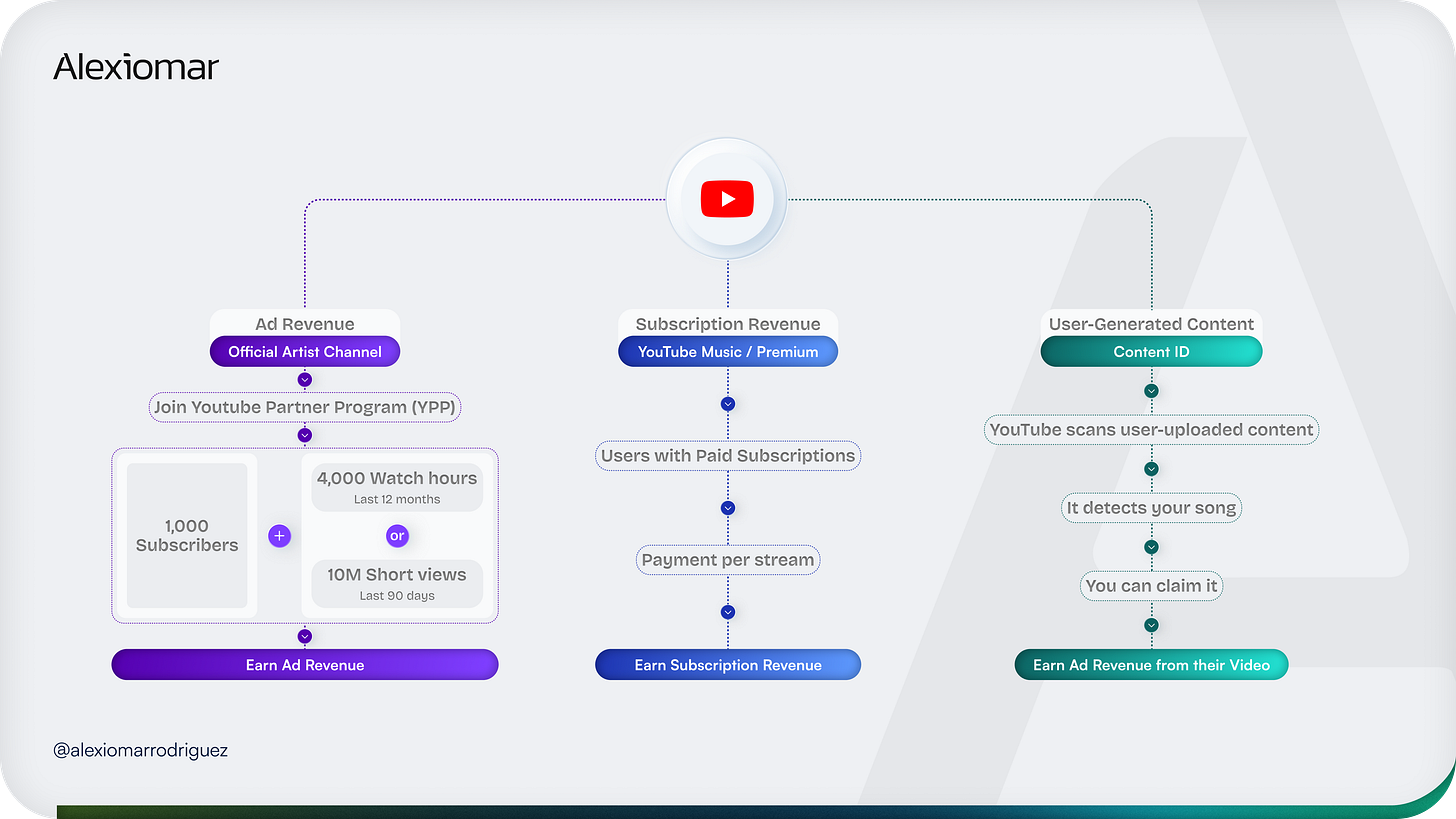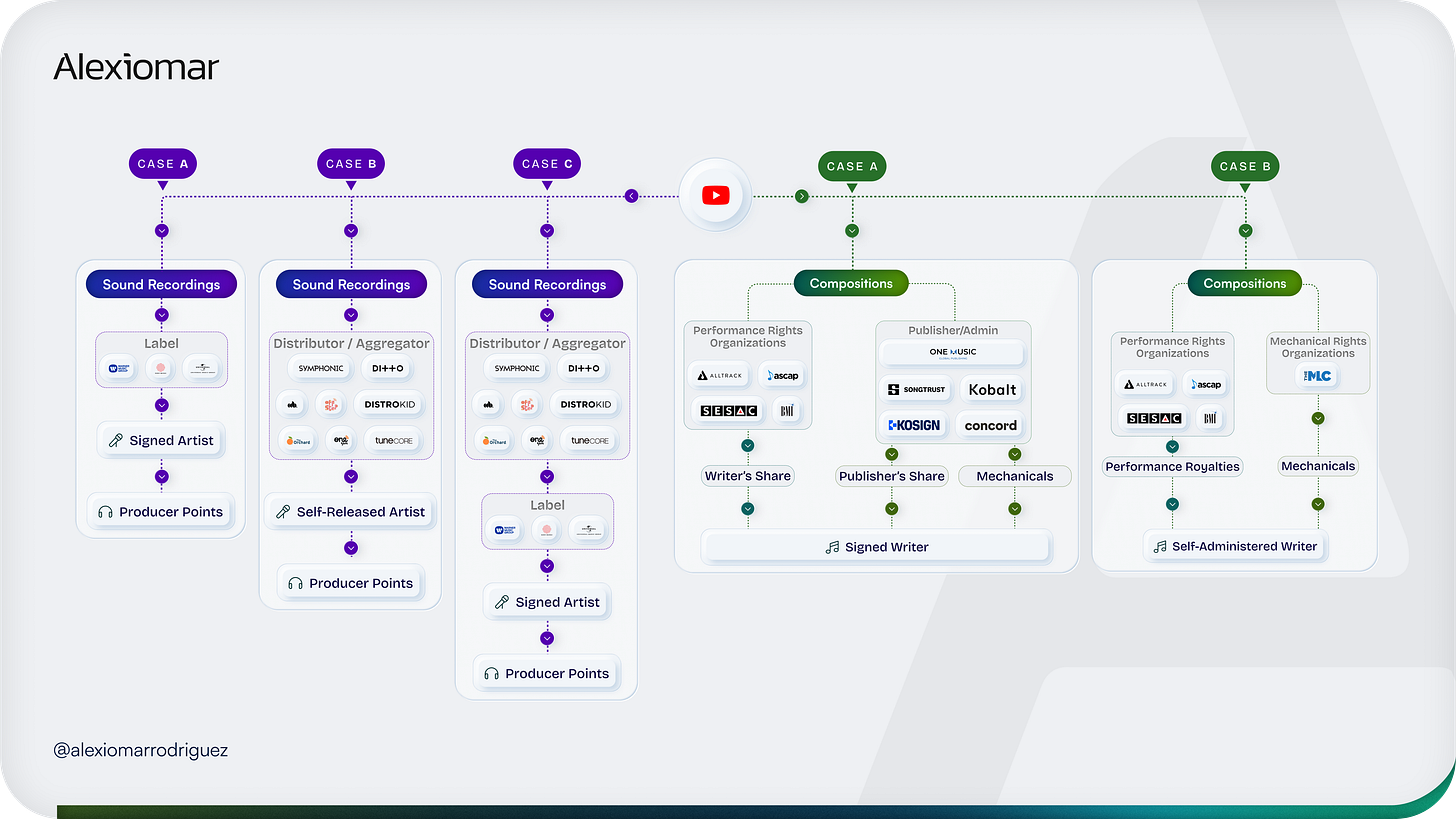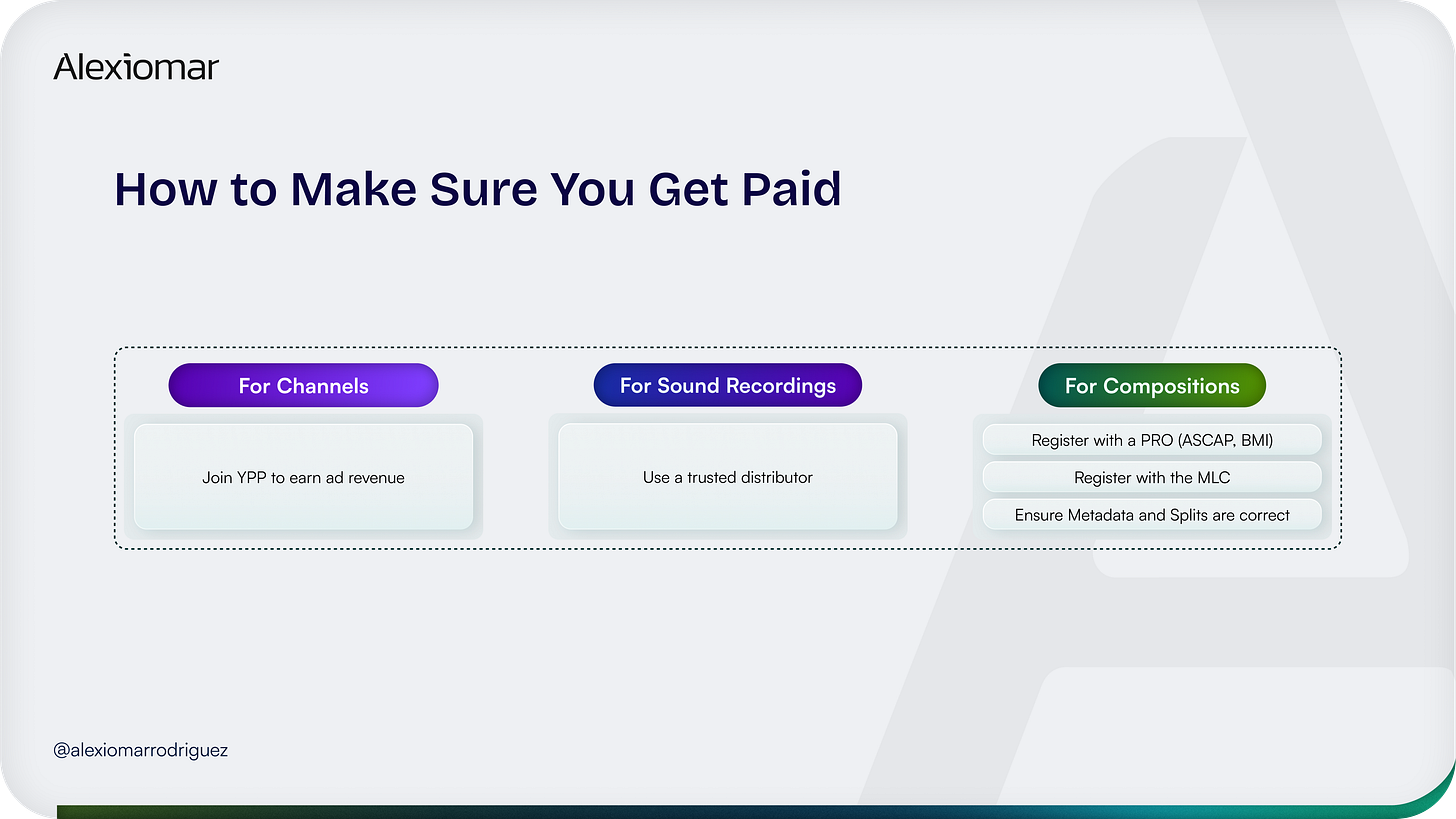YouTube paid over $6 billion to the music industry in just one year.
But many artists, labels, and songwriters never see their fair share. Why?
Because YouTube royalties are complicated. And if you don’t understand how the money flows, you can miss out. Bad deals. Missing metadata. Unclaimed earnings.
Let’s fix that.
The Problem
YouTube pays money in different ways. It depends on how the music is used, where it’s streamed, and whether the channel is set up the right way.
There are three main revenue paths:
Official Artist Channel: Monetized through ads
YouTube Music / Premium: Paid subscriptions
Content ID: Claims on user-uploaded content
Most people don’t realize each of these pays differently. And many don’t know how to collect from all three.
The Breakdown: How YouTube Royalties Work
1. Official Artist Channel (Ad Revenue)
You need to join the YouTube Partner Program (YPP)
Requirements: 1,000 subscribers and either:
4,000 watch hours (last 12 months), or
10M Shorts views (last 90 days)
Once accepted, you earn ad revenue from your own videos
2. YouTube Music & Premium (Subscription Revenue)
Pays more per stream than ads
Comes from users with paid subscriptions
3. Content ID (User-Generated Content)
YouTube scans videos for your music
If someone uses your song, you can claim it
You then earn ad revenue from their video
The exact amount per stream or ad view depends on factors like viewer location, watch time, ad engagement, and market conditions.
Note: Only views that generate ad revenue or are from premium subscribers result in royalties.
YouTube Music: Who Gets Paid and How
YouTube pays royalties to two groups:
Sound Recording Owners
Signed Artist (Major Label):
YouTube → Label → Artist
Indie Artist (Self-Released):
YouTube → Distributor → Artist
Signed Artist (Indie Label):
YouTube → Distributor → Label → Artist
In most deals, artists also pay out producer points from their share.
Note: Many labels split video revenue 50/50 between audio and video, cutting payouts further.
Songwriters & Publishers
Signed Writers:
PRO (ASCAP, BMI, etc.) → Writer Share
Publisher/Admin → Publisher Share & Mechanicals
Self-Administered Writers:
PRO → Performance Royalties
MLC → Mechanicals
To collect both types of royalties, everything must be registered and accurate.
Outside the U.S., these usually go to the local collective management organization (CMO).
Content ID: Who Gets Paid and How
When a song is used in a YouTube video, the platform uses its Content ID system to detect and monetize that usage.
There are two primary rights holders who receive royalties through YouTube’s Content ID:
Sound Recording Owners
YouTube pays them a share of the ad revenue generated from videos that contain their music. The flow of money depends on the artist’s business structure.
Signed Artist (Major Label):
YouTube → Label → Artist
Indie Artist (Self-Released):
YouTube → Distributor (with Content ID service) → Artist
Signed Artist (Indie Label):
YouTube → Distributor → Label → Artist
Content ID is not automatically included with all distributors. Some charge extra or take a percentage of your revenue for access.
Content won’t qualify for Content ID if it includes:
Non-exclusive licensed music
Creative Commons or free/open-licensed content
Public domain recordings or compositions
Fair use clips (e.g., movie scenes, memes)
Video game footage not owned by the publisher
Publishers
Music publishers also collect royalties for the underlying composition. These royalties, often referred to as “YouTube Sync”, are generated when a composition is used in user-generated content (UGC).
As music publisher David Choi notes:
“To collect these royalties, you must work with a publisher or administrator that has access to YouTube’s Publishing CMS.”
This can be a major revenue stream for songwriters whose tracks are used in fan videos, covers, and influencer content—even if they don’t own the master recording.
How to Make Sure You Get Paid
Here’s what to do:
For Channels:
Join YPP to earn ad revenue
For Sound Recordings:
Use a trusted distributor
Confirm label payment terms
For Compositions:
Register with a PRO (like ASCAP or BMI)
Register with the MLC
Ensure metadata and splits are correct
Final Thoughts
If you don’t understand how YouTube pays, you’ll miss money.
But now you do. This is your blueprint.
Want help with catalog administration and/or due diligence?
Reach out: alexiomar@xiola.co
Thanks for reading,
—Alexiomar









